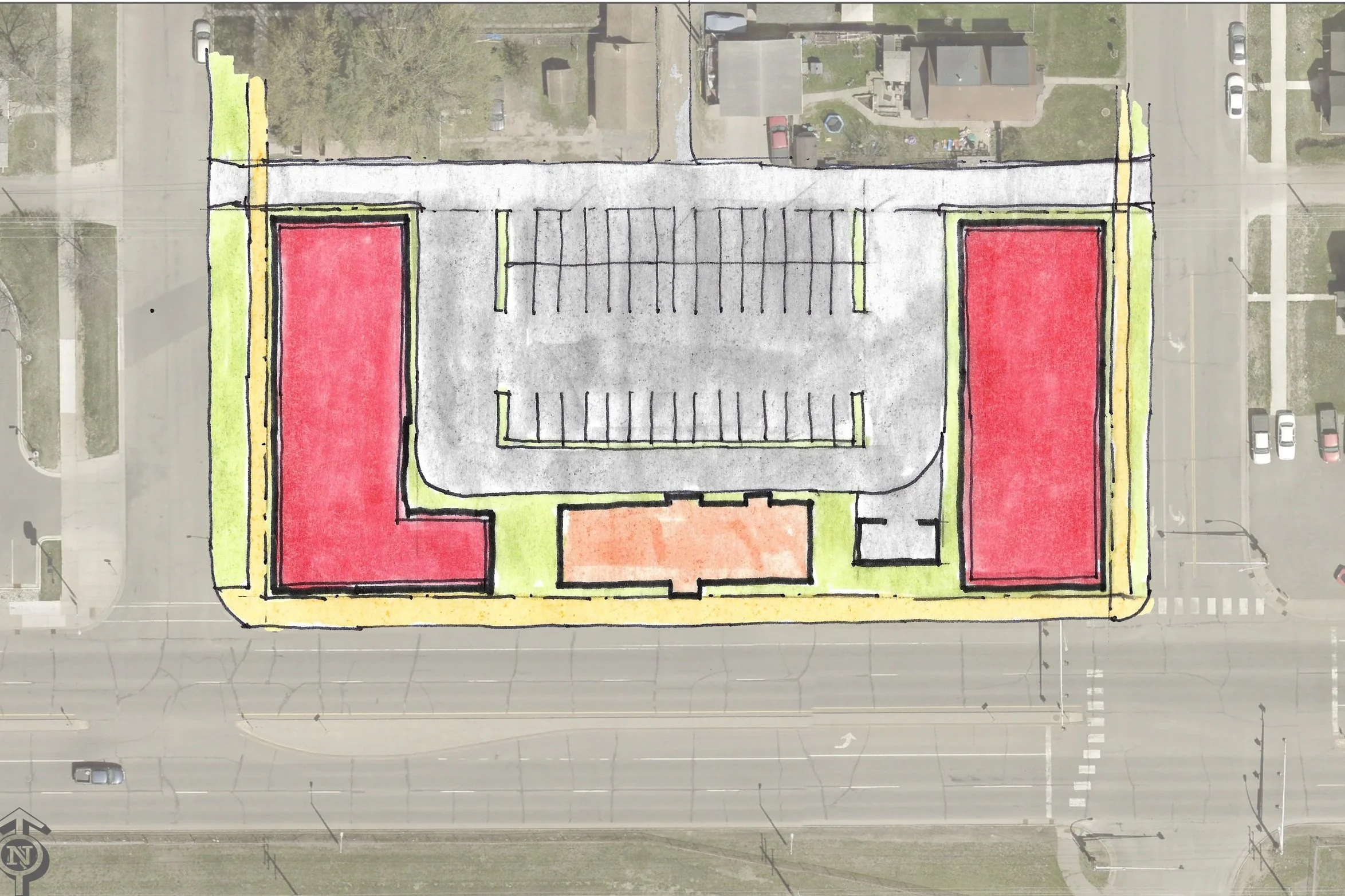The Failure of "Just Add Water" Urbanism
Arian Horbovetz is a Strong Towns member who lives in Upstate New York. Today's essay comes from his blog, The Urban Phoenix, and is republished with permission.
We’ve had this conversation before. As walkability becomes more and more of a household word to describe an exciting, vibrant area that is easily traversable on foot, developers, planners and investors are looking to jump on the bandwagon of street-forward design. Retail, restaurant, mixed-use and apartment spaces in shiny new complexes greet the sidewalk in a welcoming manner, beckoning what promises to be a sea of new pedestrians eager to peruse the new facilities.
So why are these new developments so often unoccupied? Typically the apartment spaces go quickly, but the retail spaces on the ground floor often struggle mightily to find tenants. Previous Strong Towns posts by Rachel Quednau and Tracy Loh and Michael Rodriguez have covered a number of key reasons for these vacancies, including issues of scale, motives, and the desire to lure chains instead of unique local businesses and establishments.
Another reason for this is simply that so many of these new developments are appearing in inhospitable environments. New Urbanist design relies on a bevy of components to be successful, and while well-meaning developers attempt to create pockets of this construct, the end result is so often one dimensional, or is lacking in connectivity to other areas of density and walkability. This can create islands of urbanism, which contradicts the definition completely.
Urbanism, at its core, is connective and fluid, creating places where people want to be, not simply via neighborhood revitalization, but by blending that localized revitalization seamlessly into the surrounding area. There must be a sort of “transition” from one area to the next that guides the resident or visitor gently, instead of assuming that a large-scale new-urbanist creation can suddenly spur arteries of growth in inhospitable urban deserts.
To assume that a street-forward, mixed use development will be the activator for a lifeless area is what I like to call the “just add water” effect, or the assumption that all of our “urban gardens” are the same, we just have to add water in the form of urban amenities. As anyone with something resembling a green thumb knows, different soils, climates and plants require different elements of care. to assume they all need the same thing, or rather that all will thrive when given the same treatment, is illogical. A desert cactus needs a very different kind of care than a tea rose.
Mixed-use development projects are just one component in a much larger picture of urban and neighborhood success. A mixed-use behemoth flanked by intersecting six-lane roads, where pedestrian and quality transit access is minimal and and the surrounding environment is lifeless, will likely fail. Assuming that this project will change the area around it is not only tantamount to believing that a tulip can grow in a desert, it’s believing that tulip will somehow transform the surrounding soil too. I’m no green thumb but I’m guessing that’s a pretty ridiculous assumption.
Mixed-use developments are a step above the traditional parking-first, single-use model. But their effectiveness in successfully landing commercial tenants and creating an intended neighborhood effect is based largely on the overall health of the environment in which they are built. Mixed-use developments are, inherently, intended to welcome and amplify walkability. Plugging these projects into areas where walkability is unattractive or dangerous is shortsighted, and will typically lead to a horrifically underperforming result.
(Cover photo by Arian Horbovetz.)



If cities strive to meet the basic physiological human need to move our bodies, they may be pleasantly surprised at how everything else just falls into place.